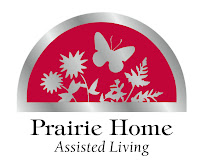 |
Joint pain can be one of the most
crippling aspects of living with arthritis.
|
A sharp burning, ripping pain… a constant
pins and needles sting… a throbbing,
traveling ache… the constant echo of hurt … the pain of Arthritis is
experienced differently by those who suffer from it. For some it is stiffness and discomfort when
rising in the morning for others it is chronic and disabling pain which travels
through the body like a hot fiery poker.
Arthritis literally means “joint
inflammation,” but the term really defines more than 100 different conditions
which affect joints throughout the body.
Symptoms of arthritis can include swelling, pain, stiffness
and a decrease in range of motion as the disease influences the muscles,
tissues and the bones associated with joints.
People of all ages, sexes, and races can suffer from arthritis and it is
the leading cause of disability in America.
More than 50 million adults and 300,000 children have some type of
arthritis. Arthritis is more common
among women and it occurs more frequently as people age. There are two
common types of arthritis which are prevalent among the aging, Osteoarthritis
and Rheumatoid Arthritis.
Osteoarthritis
Considered a common form of joint disease, OA usually afflicts people
over the age of 60. Although many
elderly experience this type of arthritis in some degree or another, it is not
considered an inevitable part of aging. Generally those with this disease deal
with limitations in their movement and experience pain. Osteoarthritis usually affects weight-bearing
joints and is commonly associated with a deterioration or breakdown of the
joint itself. Osteoarthritis destroys the cartilage which acts as a
cushion-like connection between the joints.
When everything is working well, the cartilage protects the bones of the
joint from rubbing on each other. When
Osteoarthritis attacks the cartilage it begins to die and disintegrate leaving
the joint to grind bone on bone, causing pain.
Carrying extra weight can really add stress to the lower body joints
and is a documented factor in the development of Osteoarthritis. At risk, in particular, are knees and
hips. For every extra pound a person
gains, an added 4 pounds of pressure are on the knees and each pound increases
the pressure on the hips by a factor of 6.
Another common factor in the onset of OA is injury or overuse of
joints. Former athletes have a higher
risk of developing Osteoarthritis as they age due to increased stress or sport
related injuries and on their joints when they were young. Even those who were not athletic their youth
can develop problems as they age due to repetitive motion that put stress on
their joints.
Genetics can also play a role in the onset of Osteoarthritis,
especially when there is a family history of arthritis in the hands. Families pass on bone abnormalities which
affect the joint shape and causes problems with the cartilage.
Rheumatoid Arthritis
Considered a chronic autoimmune disease, RA is a systemic inflammatory
condition that causes joint destruction. Currently there is little understanding
why those with Rheumatoid Arthritis develop an immune system that attacks
itself. The immune system, normally used
to fight infection, attacks the joint causing inflammation, swelling, stiffness
and pain. Rheumatoid Arthritis causes progressive deterioration of the joints
and often often results in permanent joint damage, deformity and disability.
The onset of Rheumatoid Arthritis can be as early as in the
mid-twenties and affects people throughout their lives. RA presents itself with swelling and
stiffness in the joints of the shoulders and neck, hands and wrists, hips,
knees and feet and is often more noticeable in the mornings or when the body is
resting. Because RA affects the entire
body, other symptoms such as fever, weight loss, fatigue and loss of appetite
are often associated with RA and the inflammation can affect the body’s glands,
blood vessels and the lining of the heart and lungs.
Managing
Arthritis
What can
individuals with arthritis do to decrease the pain associate with this disease?
Exercising is a
key component to improving health and can help ease some symptoms of
arthritis. Studies have shown even two
minutes of exercise daily is enough to ease pain, improve energy levels, strengthen
muscles that support joints, increase joint range of motion, plus lose excess
pounds that add stress to painful joints. Pool-walking and water aerobics can
be an incredible workout that does not strain joints. Stretching and building strength in muscles
through yoga and Tia chi can also be beneficial for those who suffer with
Arthritis pain. Walking, biking and
swimming are other good options.
It is important
to balance activity with rest. Moderate
movement with Arthritis is beneficial, but over exercising can cause increase
in joint pain.
Eating a
healthy balance diet with an emphasis on food with anti-inflammation properties
can make a real difference in levels of arthritic pain. Focus on consuming lean or low fat source of
protein, food rich in calcium and dark green and orange vegetables and foods
rich in antioxidants such as fruit. Tart cherries, blueberries and raspberries
can help limit inflammation and pain levels in joints.
Along with
exercising and diet, there are other options to help manage arthritic pain. Consult with your family physician about
medications that may be of benefit to you such as vitamins, and/or supplements
associated with relief from arthritis pain.
Kate
McCarthy is Director of Operations for HomeAid Health Care which provides
services for the elderly who wish to remain safe and independent at home. HomeAid is sister company to Prairie Home
Assisted Living which has served the physical, spiritual, mental and health needs
of their residents since 1999. Together
the two companies provide comprehensive care for the elderly in the Fox Valley
area of Wisconsin.
Sources:
www.arthritisfoundation.com
www.arthritis.org,
www.cdc.gov/arthritis/basics
www.myageingparent.com/health/medical/arthritis-in-the-elderly. Feb. 18, 2015.
www.pharmacytimes.com/publications/issue/2003/2003-12/2003-12-7559,Greta M. Pelegrin, PharmD
























